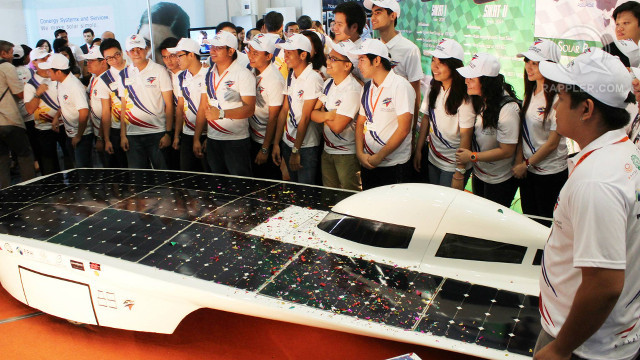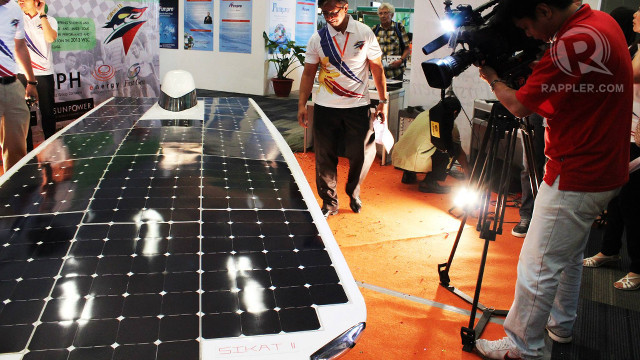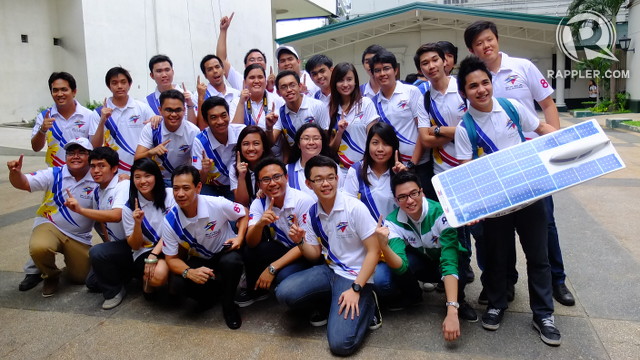SUMMARY
This is AI generated summarization, which may have errors. For context, always refer to the full article.

MANILA, Philippines – Will the Philippines hold its own in a race of solar-powered cars from all over the world?
Sikat II-A, the latest solar-powered race car developed and bullt in the Philippines, is already in Australia where the race, World Solar Challenge 2013, will be held from October 6 to 13.
On September 18, the team who developed and will operate the car during the race was given a warm send-off in a gathering of scientists, environmentalists, media, students and members of the academe in De La Salle University (DLSU) in Manila.
Dubbed Team Sikat Solar Philippines, the group is composed of 20 mechanical and electrical engineering students from DLSU and 6 faculty members.
“I’m very excited. We’ve put our hearts into this car, we’ve spent sleepless nights. We did not go home for almost a week just to finish this,” said Elijah Romey, one of the electrical engineering students in the team.
Speed of light
Sikat II-A runs at an average speed of 80 kilometers per hour (km/h) and a maximum speed of 110 km/h. While this may be turtle’s pace compared to regular race cars that go up to 300 km/h, Sikat II-A spends less power making it one of the most efficient cars in the world.

The team spent 7 months fine-tuning the car’s added features including a new battery management system, upgraded wiring, newly-designed brakes and suspension system. It uses Sunpower Silicon which has an estimated efficiency of 22% and a power output of 1,300 watts. New Schwalbe Slick tires promise lower rolling resistance which helps speed up the car.
Sikat II-A is the 4th reincarnation of Sinag, the first car entered into the World Solar Challenge under the Philippine flag in 2007. Sinag was followed by Sikat I in 2009 and Sikat II in 2011.
The latest Philippine solar car “feels like any normal car” according to Romey, who is also the designated race car driver for the competition.
The biggest difference is that it has room for only one passenger (the driver) and is typically 10 degrees hotter inside than outside the car.
“The space is just enough for the driver to move around, control the switches and turn his head.”
The car can only be driven by persons between 70 to 80 kilograms and has only natural air streaming into its vents as air-conditioning.
Romey has already test-driven the car in Basa Airbase and Subic-Clark-Tarlac Expressway (SCTEX).
World-class challenge
The World Solar Challenge is a race between solar-powered cars developed in different parts of the world. The friendly competition aims to highlight the developments in renewable energy and clean technologies in transportation.
Now on its 26th year, the competition will have 47 teams from 26 countries fighting for trophies in its 3 categories: Challenger class, Cruiser class and Adventure class.
Team Sikat will face 6 other teams in the Adventure class. The cars will try to beat each other to the finish line at the end of the 3,000-kilometer journey from Darwin to Adelaide.
Winners of the last World Solar Challenge in 2011 were teams from Japan (1st place), Netherlands (2nd place) and USA (3rd place). That year, Sikat II, the Philippines’ entry, came in 19th. – Rappler.com
Add a comment
How does this make you feel?

There are no comments yet. Add your comment to start the conversation.